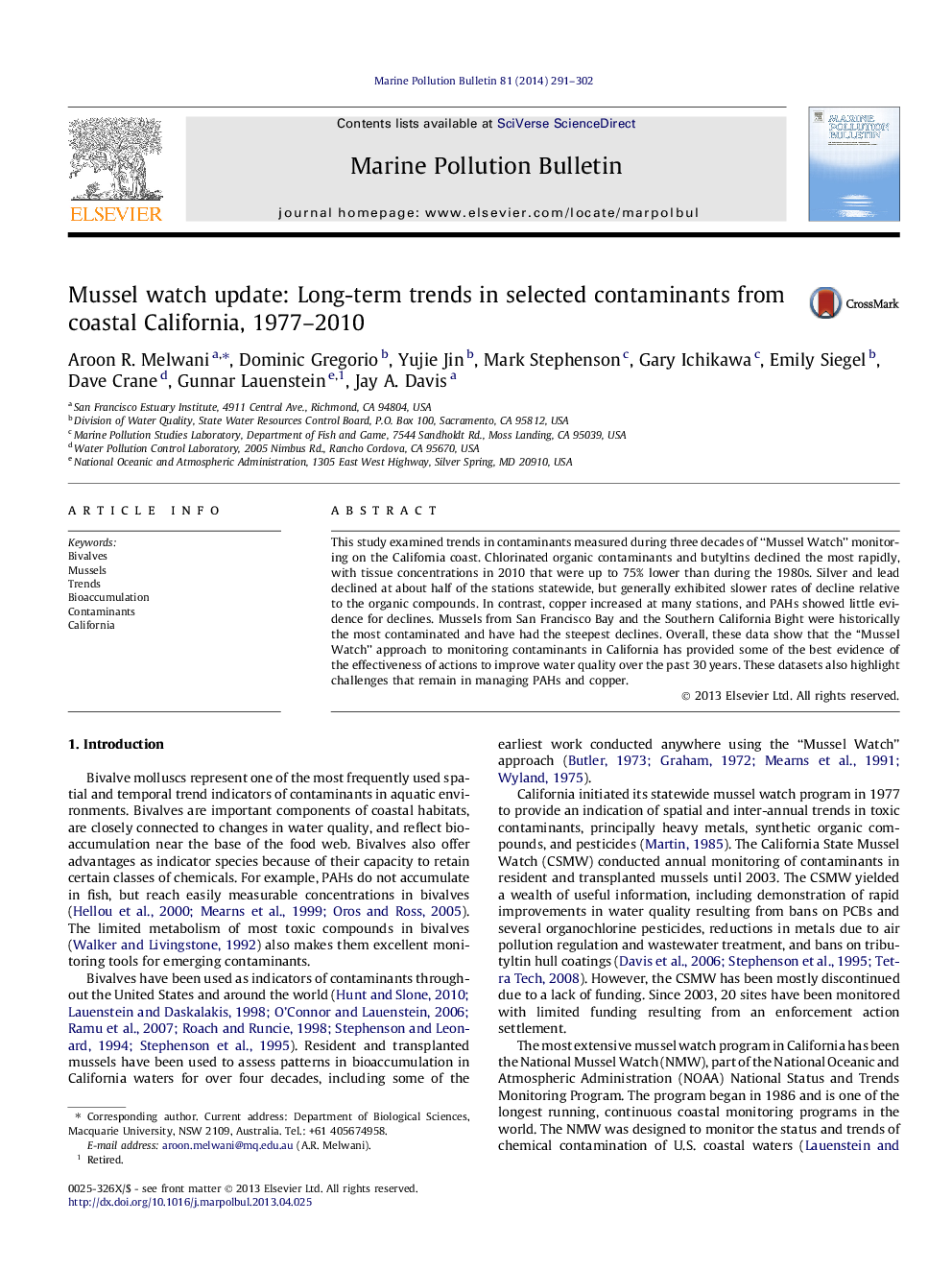| Article ID | Journal | Published Year | Pages | File Type |
|---|---|---|---|---|
| 4476762 | Marine Pollution Bulletin | 2014 | 12 Pages |
•PCBs, DDTs, and butyltins were up to 75% lower in 2010 than during the 1980s.•Copper significantly increased at over one-third of California Mussel Watch sites.•PAHs have not increased or declined in mussels across California.•DDTs remains highly elevated in mussels from Moss Landing Harbor.
This study examined trends in contaminants measured during three decades of “Mussel Watch” monitoring on the California coast. Chlorinated organic contaminants and butyltins declined the most rapidly, with tissue concentrations in 2010 that were up to 75% lower than during the 1980s. Silver and lead declined at about half of the stations statewide, but generally exhibited slower rates of decline relative to the organic compounds. In contrast, copper increased at many stations, and PAHs showed little evidence for declines. Mussels from San Francisco Bay and the Southern California Bight were historically the most contaminated and have had the steepest declines. Overall, these data show that the “Mussel Watch” approach to monitoring contaminants in California has provided some of the best evidence of the effectiveness of actions to improve water quality over the past 30 years. These datasets also highlight challenges that remain in managing PAHs and copper.
